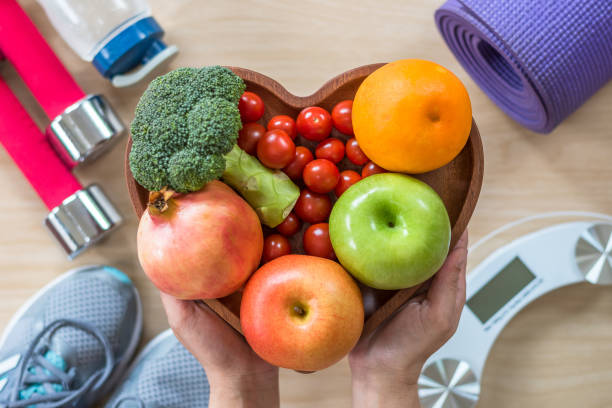The Truth About Environmental Health and Your Family’s Well-Being
The Truth About Environmental Health and Your Family’s Well-Being
Blog Article
Environmental health is a topic that often slips beneath the radar in daily family life, yet its impact is profound and far-reaching. It’s not just about pollution in city air or far-off industrial disasters—it’s about the air, water, food, and even household products present in the heart of your home. Many families are unaware of how closely the condition of their surrounding environment influences their physical and emotional well-being. Peeling back common misconceptions and understanding the real connections between your surroundings and your family's health can inspire both caution and proactive steps toward safer, happier living.
Understanding Environmental Health and Its Relevance
When people hear "environmental health," the mind frequently leaps to global issues like climate change or melting glaciers. But environmental health simply refers to the ways factors such as air quality, water purity, safe food, and non-toxic living spaces affect human health, especially for vulnerable groups like children and the elderly. Your home, neighborhood, and local community form the environments that most directly impact your loved ones. Poor environmental conditions can manifest in subtle ways, from allergies and asthma to developmental issues or even chronic diseases. Recognizing the importance of environmental health is the first step in protecting your family. For more insights and resources on creating a healthier environment, View Our Homepage to start making informed choices for your loved ones.

The Air Inside: Hidden Dangers to Breathe
Indoor air quality often goes unnoticed, assumed to be safe simply because it is inside. In reality, studies reveal indoor air can harbor two to five times as many pollutants as outdoor air. Everyday activities such as cooking, cleaning, and even burning candles can release volatile organic compounds and small particulates. Residue from dust mites, mold spores, or chemicals in paints and new furniture can further degrade air quality. For families, especially those with young children or seniors, these pollutants aren’t just uncomfortable—they can trigger allergies, aggravate asthma, and, over the long term, increase the risk of respiratory problems.
Chemicals in Everyday Home Products
The products friends and families trust—cleaners, air fresheners, plastics, and personal care items—frequently contain chemicals that go unrecognized or misunderstood. Many are a cocktail of substances including phthalates, parabens, and even formaldehyde releasers. While regulatory agencies provide guidelines for isolated usage, the long-term health impacts of combining and accumulating these chemicals are still being studied. For families, especially those with infants or during pregnancy, exposure raises concerns about hormone disruptions, skin sensitivities, and developmental complications.
Critical Role of Water Quality
Access to clean water is, understandably, seen as a given in many places. Yet, safety can be compromised through aging infrastructure, contamination from pesticides, or industrial runoff. Families on wells may have additional risks from bacteria or heavy metals such as lead or arsenic. Even in cities, occasional news reports on water quality remind us that vigilance about what comes out of the tap is still needed. Unsafe water can cause acute gastrointestinal illnesses and, in persistent cases, may contribute to developmental and neurological health issues in children.
Food Safety in a Modern World
Our food supply is shaped by numerous environmental factors, including pesticide application, industrial processing, and even packaging methods. While regulatory bodies strive to maintain safety, traces of pesticides, antibiotics, and artificial additives frequently appear in everyday groceries. Concerns have mounted over time regarding how such exposures contribute to the rise of allergic reactions, metabolic disorders, and other chronic conditions in children. The question of nutrition is not only about what’s included, but also about what’s left out—modern agricultural methods have led to reduced micronutrients in many staple foods.

How Children Are Especially Vulnerable
Children are more susceptible than adults to environmental hazards. Their bodies are still developing, and they breathe faster, drink more water, and eat more food relative to their size. As kids explore their environment through crawling and touching, they become exposed to contaminants at ground level—think of dust, pet dander, or pesticide residues tracked inside. Infants and toddlers are more likely to put objects in their mouths, further raising opportunities for exposure. Since developing organs and immune systems are more easily disrupted by toxins, even low levels of common chemicals or pollutants can have lasting effects.
Building a Healthier Home
A safer family environment starts with thoughtful changes at home. Increasing ventilation, choosing non-toxic or fragrance-free cleaning products, and reducing clutter all make a difference. Decisions like opting for natural fiber rugs, using glass storage containers, or filtering tap water add up over time. Washing fruits and vegetables thoroughly and striving for organic produce when possible also reduces exposure to unwanted chemicals. Every small step—whether it’s introducing houseplants to improve air quality or minimizing plastic use—contributes to your family's protective buffer.
Community, Policy, and Shared Responsibility
Families are not alone in their quest for better environmental health. Local policies, community standards, and national regulations all play a key role in shaping the safety of air, water, and food. Advocating for cleaner parks, safer playgrounds, or improved water infrastructure benefits everyone. Supporting local and national efforts for stricter chemical safety standards or better food labeling can create ripple effects that extend far beyond your individual household. Knowing that your family’s well-being is linked to collective action motivates engagement and increases resilience.
Conclusion
Protecting your family's health is strongly connected to the environment you share. Awareness is always the first and most important defense. By understanding the intricacies of environmental health—from air and water quality to food safety and chemical exposures—you gain the power to make informed choices. Small, steady actions in the home, along with active participation in community and broader advocacy, can guard your family's present—and shape a safer, healthier future for generations to come. Environmental health is not an abstract concern; it is central to the happiness, vitality, and security of every family.